- Home
- Michael Leese
To Kill A Critic
To Kill A Critic Read online
To Kill A Critic
A gripping murder thriller set in modern-day London
Michael Leese
A short story featuring Jonathan Roper
A note from the author.
To Kill A Critic is a short story from the unputdownable series of standalone novels featuring Jonathan Roper and Brian Hooley. The pair are Scotland Yard’s secret weapon in the fight against crime and terror - but they couldn’t be more different. Roper is young, gifted and autistic, and his idea of social interaction is telling people what they’ve got wrong. Hooley is the veteran coper who has seen and done it all. His idea of social interaction involves a punch in the mouth followed by a pint. It’s a potent mix and offers a roller coaster ride that will leave you gasping for breath or laughing out loud.
This book is written in British English.
I’d like to invite you to visit www.michael-leese.com to sign-up for my VIP readers list, to hear about new releases, free book promotions, special offers and exclusive extras.
As a Brit I’d recommend you settle down with a nice cup of tea and enjoy what is far more than just another cop story. You may have your own ideas on the perfect liquid accompaniment…
Central London
The view of the London skyline was spectacular. At this time of the evening, as dusk made way for the dark of night, it was like looking out over a sea of lights. But as the penthouse on the twenty-seventh floor filled with ever more people - police officers, scenes of crime, medics - hardly anyone spared it more than a quick glance.
Instead, the centre of attention was the naked man hanging from a metal framework in the centre of the open plan living room at the top of one of the three towers that help make-up the Barbican estate in the eastern part of central London. That he’d been murdered was beyond doubt.
He was upside down with rope lashed around his feet and attached to a platform made out of scaffolding poles. It created the impression the victim was inside a half-built cage. His body had been sprayed with white paint and on his torso was written, in red of course, ‘Clowns Must Die.’
The killer hadn’t stopped there. The eyebrows had been shaved and replaced with tufts of fake ginger hair that had been randomly glued in place and before he’d been strung up the victim’s mouth, ears and nose had been filled with hot wax, which must have been allowed to cool since it was now set hard. As a final touch, his eyes had been covered with a rough bandage.
“I’m willing to bet a five pound note that the killer and the victim know each other. You’ve got to really hate someone to do this much damage, and you can’t tell me we’re not supposed to read some symbolism into the way the body has been left?”
The speaker was Detective Chief Inspector Brian Hooley, and his words went unheard since the man they were directed at was lost in the deepest concentration. Jonathan Roper, dressed as always in his skinny-fit black suit, white shirt and black tie, had walked into the living room and immediately frozen to a spot about three feet inside the doorway, forcing the crowd to go around him as he studied the scene.
He’d spent several minutes just standing there and since all those present were, to some degree, familiar with Roper’s methods, they left him to it. Over by the far window stood Julie Mayweather, his ultimate boss, although he spent most of his time working with the DCI. She was talking quietly to the duty doctor who had just confirmed, to no surprise at all, that the victim was dead. Nearby were a couple of detectives, looking restless as they waited to talk to Mayweather, and just outside the door were more scenes of crime people, preparing to go through the flat.
Roper finally moved further in to the room and began to slowly circle the body. Hooley left him to it. He knew the younger man was memorising every single detail. Unlike most of the people in this room, he wasn’t going to be in a hurry to forget what he was looking at. He had a phenomenal memory, never seeming to forget anything, which Hooley thought must be a burden, although he often wished he was better at remembering where he’d left his car keys.
Some people said that Roper’s ability was a talent that was probably linked to his autism, but Hooley wondered if there was more to it than that. The younger man had once confided that when he was young he had become utterly obsessed with the need to accurately remember details, so much so that he had relentlessly practised memorising lengthy lists of words or numbers to improve his recall. After listening to this the DCI had come to the conclusion that his seemingly cast-iron memory owed as much to an amazing amount of hard work as it did to any particular talent.
Being Roper, he had another card to play. He had created a unique method of holding information in his mind, something he referred to as the Rainbow Spectrum. Hooley wasn’t sure he understood precisely how this concept worked, but he knew it somehow allowed Roper to access a phenomenal range of data.
These talents made him, in the DCI’s view, an outstanding investigator, one who could spot connections that others missed, although his ability was not something that was universally appreciated. Some colleagues at the Special Investigations Unit complained he could be a cold, enigmatic man. He was even known to talk to himself, something seized upon by his critics as a sign that all was not well.
The DCI had long ago dismissed such concerns. He reckoned that some of the most intelligent conversations he had were those he had with himself and, more to the point, he had never once worked with a large group of people where he liked every single one of them. Everyone had their little quirks and, while Roper’s might be a bit more attention-grabbing, that didn’t stop him from being a talented detective who brought real passion to his work.
He realised he had allowed his mind to drift as he watched Roper performing his memory trick. Once he had ‘recorded’ the scene with his eyes, he would be able to recall it as a perfect 360-degree image. To someone who didn’t know him it might appear that Roper was doing very little, but behind an impassive mask there was a lot going on.
A soft cough caught his attention. He turned to see a uniformed Sergeant who was doing his best to ignore the man hanging upside down. He was holding a glossy, colour photograph, the kind of thing rarely seen in this era of digital cameras. It was an old-style publicity shot of the victim, taken just a few days earlier, and had just been biked round by his agent. Hooley held it in his left hand as he tilted his head to try and compare the face in the picture with the man hanging from the pole.
After a few seconds he grunted and returned to upright. His boss was looking at him with a quizzical expression. “I’m sure it’s him.” He walked round and handed her the picture, so she could perform the same stretched neck trick. Straightening up, she said. “I agree. It’s him. I suppose you’ve already worked out what this means?”
“Yup. We’ve got several thousand suspects, at the minimum.”
The man in the picture was, depending on your point of view; the finest critic who had ever lived, shining a bright light into the darkness on behalf of his readers, or a sadistic bastard who reveled in ruining lives and careers.
His full name was Robert Leopold Hargreaves Randall, a name which suggested he was born into privilege, but actually he was brought up in a comfortable but not especially affluent home, in Royal Tunbridge Wells, Kent. In any event, most people knew him by one of his nicknames, Bob the Barbarian, and the slightly more brutal Slayer.
Randall was the last of the old-style critics; a man so acerbic he could strike people dead with the power of words alone. Or so it was claimed.
He had started life in the 1980s as a notably tough theatre reviewer; so cruel that one nervous leading man had been reduced to stammering silence on stage. Other actors took a more direct route, refusing to appear at all if they knew he was in the house.
The Sla
yer had reveled in his infamy, and was not beyond some pretty ham acting of his own if the circumstances demanded it. He always sat in the centre of the third row in the stalls and never missed an opening night in London’s West End. Like Roper he was given to wearing the same thing every time, although he favoured a more rumpled look with a cream linen suit and pink shirt. He rarely wore a coat but on very cold nights would don a huge blue scarf and a black beret.
For the opening of a much-hyped musical, the producer, who had invested his life savings in bringing it to the stage, had made a big point of banning him from attending, even boasting to the London Evening Standard that he had hired uniformed guards to prevent Randall from sneaking in.
The Slayer got around that problem by deploying make-up skills that a professional would have been proud of, completing his disguise with an expensive wig of thick black hair, offsetting his usual shiny headed baldness. He’d even gone to the trouble of purchasing a cheap off-the-peg, grey suit, something he would never normally wear.
Despite the presence of the guards he had breezed inside the theatre, biding his time until the interval when he scraped off the make-up and, as the lights dimmed, and the show was about to get underway for the second half, he had stood up and removed the wig with a flourish. The thespians on stage visibly wilted as they realised who it was. Despite them making a brave attempt to rally, the Slayer had another trick in store.
Now firmly the centre of attention, he produced a black skull cap from his pocket and with a wave of his hand, placed it on his head in the best traditions of the hanging judges. The message could not have been clearer. The show was toast.
Afterwards, there was much debate about whether he was simply taking revenge on the producer for trying to ban him, or had made an honest judgement on the production. Whatever the truth, the stunt established his reputation world-wide, and caused sales of the paper he worked for to soar. It was claimed that he was earning a million pounds a year, a fantastic sum in the early 1980’s. When asked if this was true he disdainfully refused to confirm or deny.
What was often overlooked was that he could be generous when he felt credit was due. More than half his reviews were either positive, or contained just a little constructive criticism, and he was always quick to herald new talent. Plenty of young stars owed their success to having first been praised by the Slayer.
Of course, this distinction tended to get overlooked in the knockabout nature of contemporary life, something that was exaggerated by the impact of social media. For those who felt he was a threat to their professional lives, there was, for just a moment, a glimmer of hope.
A few years into the new Millennium and newspaper revenues were collapsing, spirited away by the giants of the internet. The accountants who had been sidelined during the days of plenty pounced. Now it was time to slash the budgets and challenge every expense, even the position of Bob the Barbarian was questioned. At the same time ordinary consumers were being given a platform to express their views. The Slayer’s many enemies gleefully predicted that it was his turn to face annihilation.
The man himself never saw it like that; he spied an opportunity, launching his own website and expanding his critical repertoire. Now he was turning his hand to art, television, film, food and even architecture.
He was a polymath and his expertise ranged across so many subjects he could have lived several lifetimes, which made his criticism all the more wounding since his observations were difficult to dismiss. Readers recognised that there was genuine intellectual framework at the heart of his words, and they also appreciated the manner in which he skewered the pompous or fake.
His website rapidly filled with reviews and woe betide anyone who failed to meet the standards he expected. Restaurant reviews were the cause of many a bitter enmity, and stories of his clashes with chefs dominated online news feeds.
Sometimes things even got physical. He was literally thrown out of several restaurants but always had a photographer on hand to capture the moment. His response was to post the picture under the name of the eatery, with the headline demanding, “What are they trying to hide?”
He worked every day and had a devoted following of millions. Some were genuinely interested in his opinions, most made no secret of the huge pleasure they drew from reading about the latest subject for evisceration.
He was accused of going too far when he caused the near collapse of a celebrity. She was famous for appearing drunk on a reality show and had got a role in a West End musical which required her to appear in a tight-fitting swimming costume.
The Slayer did not think she was right for the role, opining, “If you take my advice, never be tempted to put on a wet suit instead of the bikini. In certain parts of the world you might have your head bashed open during the culling season.”
Once the insult had been explained to her, the now overwrought celebrity had instantly checked herself into a health clinic, claiming stress and medical conditions were the reasons she was overweight.
The Slayer was condemned as a misogynist and using body shaming tactics against a vulnerable young woman. He ignored the clamour in his usual style. Offering just the one observation. “I thought I was quite kind to the young lady. I didn’t offer an opinion on her acting abilities.”
To the relief of many in London he would take occasional holidays, with New York a favourite, although those coming under his reviewing spotlight were not so enthusiastic. New Yorkers took him to their heart. On more than one occasion, while he was eating in a restaurant, a crowd of fans would wait outside, breaking into chants of “Slayer, Slayer” when he emerged on the street.
In short, he was hated, loved and untouchable. Or so it had been thought.
◆◆◆
Roper had completed his visual survey and was now taking his time. He was learned to stay with one task until he was happy he was on top of it. There could be little doubt that the killer had made a statement killing; the trick was in attempting to translate that statement accurately.
He had become more relaxed about trusting other members of the team to do their jobs. This had not come easily to him since he was inclined to interfere, assuming his interventions would be appreciated, but he had finally accepted Hooley’s constant refrain that nobody liked working with someone looking over their shoulder. He knew the scenes of crime people might come up with the most important information; identifiable fingerprints or traces of useable DNA.
Hooley was proud of the way Roper had become a better team player, learning to recognise the qualities of his colleagues had been key. One of the advantages of working for an elite unit was getting the pick of the forensics people. Other police teams hated the advantage they got, but as Mayweather said. “It’s always us that pick up the jobs that no one else would really want.”
Roper finally lifted his head and saw that his two senior officers were standing side-by-side and looking at him. Hooley was holding his hand out in a fist in front of his body, his thumb raised but turned along a horizontal rather than vertical line.
The basic message was: “You’ve been looking at this for a while. Do you have anything to say now, or do you want to think about it a little longer? No pressure; it’s your choice.” Over time the two men had found certain hand-signals were a reliable way of communicating, one that Roper was very comfortable with.
His autism could sometimes get in the way since he might be too literal or misread social signals. Using their own sign-language seemed to get around that problem. It even helped stop Roper taking too much responsibility onto himself, or becoming annoyed because he felt others weren’t approaching a task with the required intensity.
Before Roper could say anything, another detective arrived. He’d been put in charge of identifying any CCTV systems around the building that might have captured the killer coming or going. There was nothing in the penthouse, the Slayer relying on mortice locks for his security.
The fact that Sergeant Peter Dunwoody had come back so quickly sugge
sted he might have found something and Mayweather nodded to show he should go ahead.
“There is a camera in the lobby, and we checked against the time of the 999 call.” Someone, presumably the killer, had rung to report the murder. Dunwoody carried on. “The recording shows someone dressed as a clown getting into the lift about an hour before the call. The same clown is seen leaving after the call.”
As he finished a loud beep sounded to indicate he had just received an email. He checked his phone and grinned, tapped the screen a few times then held the device up.
“The security man has just emailed it to me, so I can show you.”
The film he called up was surprisingly good quality with a time and date stamp running in the top right of the picture.
“Bloody hell,” said Hooley. “It looks like Ronald McDonald. That’s all we need.”
Roper looked baffled. Although only 30 years old, large parts of contemporary life passed him by. He rarely watched TV, and would only visit the cinema to see films like Star Wars, Lord of the Rings, Avengers and anything with a sci-fi story line. Human dramas went over his head.
His limited interaction also applied to the food he ate. At home he lived on the organic frozen meals he kept in his freezer. Otherwise he favoured a handful of restaurants, coffee shops and cafes which he knew could be relied on for the consistency of their meals and drinks.
“Ronald?” he asked.
Dunwoody tried to explain. “You know, McDonalds, the burger place. My kids love it, they’d live there if they got the chance.”
The look of total mystification was a sight to behold. Now Roper was being introduced to the alien concept of fast food. He’d once got quite cross with Hooley over the expression, demanding to know how it could be proved food was actually fast. As for children, Roper was of the conviction that they were miniature humans with nothing worthwhile to say until they were adults.

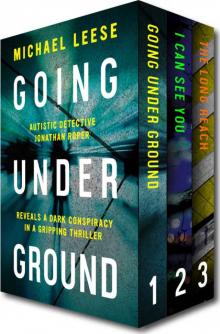 (Jonathan Roper Investigates Boxset
(Jonathan Roper Investigates Boxset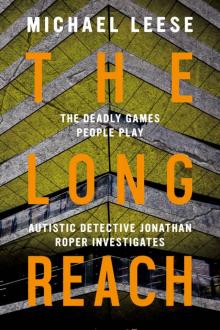 The Long Reach: British Detective (Jonathan Roper Investigates Book 3)
The Long Reach: British Detective (Jonathan Roper Investigates Book 3) I Can See You
I Can See You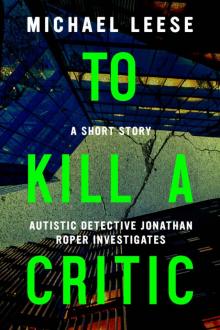 To Kill A Critic
To Kill A Critic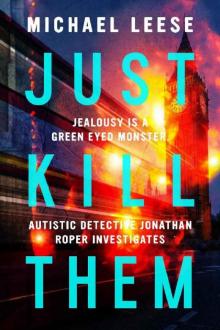 Just Kill Them
Just Kill Them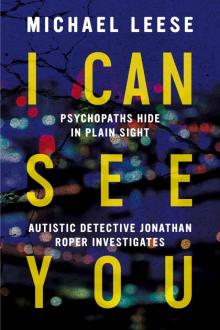 I Can See You: Autistic British Detective: Jonathan Roper Investigates Book 2
I Can See You: Autistic British Detective: Jonathan Roper Investigates Book 2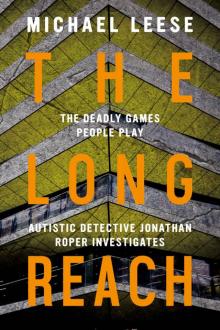 The Long Reach_British Detective
The Long Reach_British Detective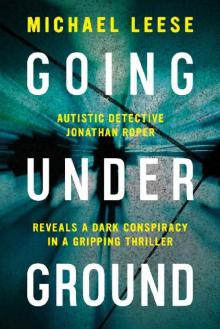 Going Underground (Jonathan Roper Investigates Book 1)
Going Underground (Jonathan Roper Investigates Book 1)